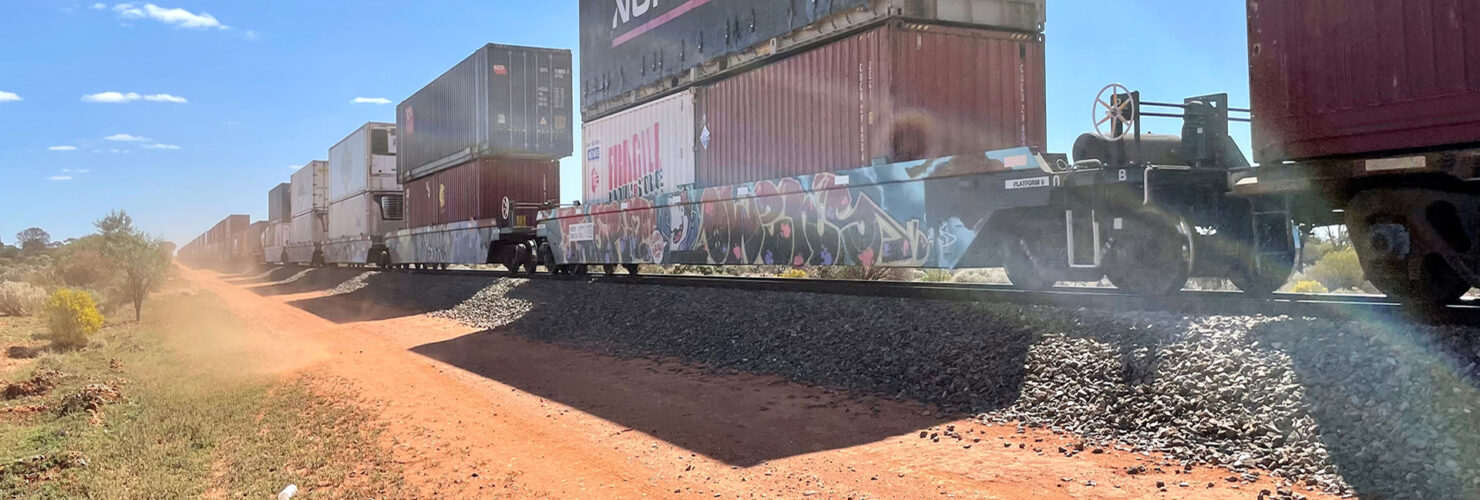Wednesday, February 23, 2022
Safety Message: Sticking brakes
ONRSR is reminding rail transport operators about a range of risks, causes and controls associated with sticking brakes on all types of rolling stock.

The two most common causes of sticking brakes are:
> Jamming of mechanical components of the braking system such as rods, levers, brake beams or on rare occasions, pistons in the brake cylinders; and
> Incorrect operation of the air brake system resulting in brakes releasing slowly or not at all.
If not detected or rectified, sticking brakes can lead to damage to rolling stock wheels and track infrastructure as well as causing track side fires. ONRSR’s investigations into sticking brakes have identified causes and contributing factors across the four areas listed below. While not exhaustive and given the range of operational environments within the Australian rail industry, the following causes, contributing factors and controls should be noted.
The term ‘sticking brakes’ is used in this safety message, however other terms such as ‘dragging brakes’ are also in common use throughout the industry.
CAUSES AND CONTRIBUTING FACTORS
1. Organisational factors e.g.
- Inadequate controls put in place e.g. not adopting or implementing modern design of brake systems on locomotives and wagons.
- Use of controls being inadequate to address the risk e.g. not adopting or implementing measures to reduce jamming of brake rigging components.
- Failure to implement an effective maintenance regimen that includes inspection for sticking brakes.
- Inadequate driver training on proper train handling and use of brakes.
- Inadequate procedures, rules, training, culture, leadership.
2. Technological or equipment factors e.g.
- Degradation of seals and liners, and ingress of contamination such as water or dust into the brake cylinders.
- Wear of the brake beam tangs and/or the polyurethane liners upon which they slide in the bogie side frames.
- Wear of brake lever bushes and pins.
- Brake rigging design not accommodating relative movement between bogie and rolling stock underframe which can increase the likelihood of jamming.
3. Environmental factors e.g.
- Operation in coastal environment or carriage of corrosive payloads.
4. Individual factors e.g.
- Poor or incorrect train handling.
- Train crew error and/or miscommunication.
CONTROLS
While not an exhaustive list, ONRSR is aware of the following controls that are available and have been used by railways both in Australia and overseas. Rail Transport Operators (RTOs) should note that there are safety and operational benefits and possible detriments associated with each control. Operators must consider a range of factors, including the likelihood of the hazard and the degree of harm to determine what controls are reasonably practicable to implement (see the ONRSR Guideline – Meaning of duty to ensure safety so far as is reasonably practicable SFAIRP for more information).
While elimination and substitution controls are limited, there are several engineering and administrative controls that can be put in place to reduce the risk
Engineering:
Engineering controls that form part of the rolling stock braking system which can reduce the likelihood of sticking brakes - examples include:
1. Preventative design controls are design controls that prevent sticking brakes occurring in the first place by reducing the opportunity of unwanted friction to occur. Examples include:
- Bogie mounted brakes reduce the number of rigging linkages and thus the likelihood that brake rigging can lead to sticking brakes.
- Brake rigging components manufactured to closer tolerances and higher accuracy to reduce unwanted friction.
- Accurate alignment of brake rigging components such as rods, levers and other linkages prevents degradation of bushes and pins and prevents scouring of sliding surfaces.
2. Mitigation design controls are design controls that minimise the likelihood of friction causing sticking brakes. Examples include bushes and wear liners which are made of material, such as polyurethanes, which are low friction. These bushes and wear liners have superior wear and impact resistance which minimises the risk of friction causing sticking brakes.
3. Improved brake signal propagation that ensures brakes fully release when commanded by the driver. Examples include large radius bends in wagon brake pipes in solely air brakes systems and electronically controlled pneumatic (ECP) braking systems.
Administrative:
Administrative controls that RTOs can employ to mitigate the risks associated with sticking brakes include the following:
1. Wayside monitoring systems such as hot wheel detectors and wheel impact load detectors can be used to identify rolling stock with sticking brakes. Operators must implement inspection procedures for when an alarm is triggered by wayside monitoring system.
2. Routine Inspections include in depot scheduled maintenance as well as in field roll-by and full train inspections. Regular inspections allow rolling stock operators to detect and fix brake system faults and adjust brake rigging to maintain tolerances/clearances.
3. Train handling in respect to sticking brakes train handling is about reducing the use of frequent short duration brake applications that do not provide sufficient time between applications for the brakes to release hence increasing the likelihood of sticking brakes
4. Review of incidents RTOs should investigate all occurrences of sticking brakes to ensure that the causes and contributing factors are identified and controls are put in place, especially when identified causes are common across the RTO’s fleet.
5. Documented Standards Processes and Procedures the administrative controls listed above must be documented as part of an operator’s safety management system. Examples of where these controls may be documented include technical maintenance plans, maintenance procedures, work instructions, maintenance records, and training and assessment materials and records. These documents should define:
- what parts of the wheel or brake rigging to examine for signs or precursors of sticking braking;
- the process an RTO follows to investigate causes of sticking brakes in a thorough and consistent manner;
- how an RTO implements corrective actions, including the tracking and monitoring of modifications across a fleet.
This information is provided as guidance only and may not be applicable to all rail transport operators.